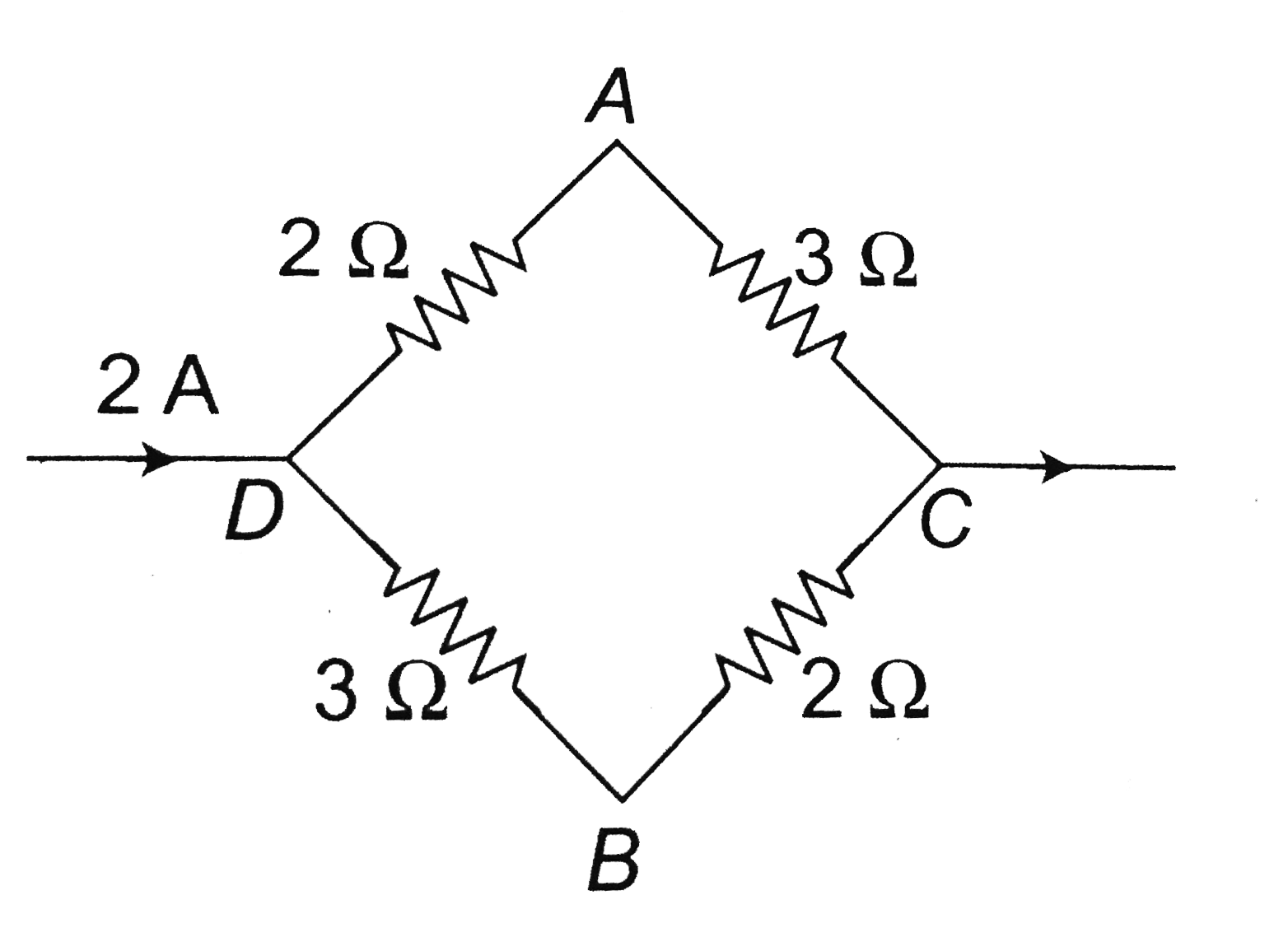When 1.0×1012electrons are transferred from one conductor to another, a potential difference of 10V . What will be capacitance of the two -conductor system .
To find the capacitance of the two-conductor system when 1.0×1012 electrons are transferred and a potential difference of 10V is established, we can follow these steps:
Step 1: Calculate the total charge (Q) transferred
The total charge transferred can be calculated using the formula:
Q=n⋅e
where:
- n is the number of electrons transferred, which is 1.0×1012.
- e is the charge of a single electron, approximately 1.6×10−19 coulombs.
Substituting the values:
Q=(1.0×1012)⋅(1.6×10−19)
Step 2: Perform the multiplication
Calculating the charge:
Q=1.0×1.6×1012×10−19
Q=1.6×10−7 coulombs
Step 3: Use the capacitance formula
The capacitance C is defined as:
C=QV
where:
- Q is the charge calculated in Step 2.
- V is the potential difference, which is 10V.
Step 4: Substitute the values into the capacitance formula
Substituting the values:
C=1.6×10−710
Step 5: Perform the division
Calculating the capacitance:
C=1.6×10−8 farads
Final Answer
The capacitance of the two-conductor system is:
C=1.6×10−8F
---
The total charge transferred can be calculated using the formula:
Q=n⋅e
where:
- n is the number of electrons transferred, which is 1.0×1012.
- e is the charge of a single electron, approximately 1.6×10−19 coulombs.
Q=(1.0×1012)⋅(1.6×10−19)
Calculating the charge:
Q=1.0×1.6×1012×10−19
Q=1.6×10−7 coulombs
The capacitance C is defined as:
C=QV
where:
- Q is the charge calculated in Step 2.
- V is the potential difference, which is 10V.
Substituting the values:
C=1.6×10−710
Calculating the capacitance:
C=1.6×10−8 farads
The capacitance of the two-conductor system is:
C=1.6×10−8F
Topper's Solved these Questions
- BOOK - HC VERMA ENGLISHCHAPTER - CAPACITORSEXERCISE - short answer7videos
CAPACITORS
- BOOK - HC VERMA ENGLISHCHAPTER - CAPACITORSEXERCISE - OBJECTIVE 26videos
CAPACITORS
- BOOK - HC VERMA ENGLISHCHAPTER - BOHR'S MODEL AND PHYSICS OF THE ATOMEXERCISE - Short Answer10videos
BOHR'S MODEL AND PHYSICS OF THE ATOM
- BOOK - HC VERMA ENGLISHCHAPTER - DISPERSION AND SPECTRAEXERCISE - Question for short Answer6videos
DISPERSION AND SPECTRA
Similar Questions
The kinetic energy of an electron accelerated from rest through a potential difference of 10V will be:
View SolutionAn electron experiment was performed with a beam of electron accelerated by a potential difference of 10.0keV .What is the wavelength of the electron beam
View SolutionElectrons flow in a conductor from one point to another due to a…………………….(potential/electronic) difference between the two points.
View SolutionA current of 2A flows in a system of conductor as shown. The potential difference (VA−VB)
 View Solution
View SolutionA current of 2A flows in a system of conductor as shown. The potential difference (VA−VB)
 View Solution
View SolutionA current of 2A flows in a system of conductor as shown. The potential difference (VA−VB)
 View Solution
View SolutionDerive the expression for the current density of a conductor in terms of the conductivity and applied electic field. Explain with reason how the mobility of electrons in a conductor changes when the potential difference applied is doubled, keeping the temperature of the conductor constant.
View SolutionA 10μF capacitor is charged to a potential difference of 50V and is connected to another uncharged capacitor in parallel. Now the common potential difference becomes 20 volt. The capacitance of second capacitor is
View SolutionA 10μF capacitor is charged to a potential difference of 50V and is connected to another uncharged capacitor in parallel. Now the common potential difference becomes 20 volt. The capacitance of second capacitor is
View SolutionIn a metal in the solid state, such as a copper wire, the atoms are strongly bound to one another and occupý fixed positions. Some electrons (called the conductor electrons) are free to move in the body of the metal while the other are strongly bound to their atoms. In good conductors, the number of free electrons is very large of the order of 1028 electrons per cubic metre in copper. The free electrons are in random motion and keep colliding with atoms. At room temperature, they move with velocities of the order of 105 m/s. These velocities are completely random and there is not net flow of charge in any directions. If a potential difference is maintained between the ends of the metal wire (by connecting it across a battery), an electric field is set up which accelerates the free electrons: These accelerated electrons frequently collide with the atoms of the conductor, as a result, they acquire a constant speed called the drift speed which is given by Ve= 1/enA where I = current in the conductor due to drifting electrons, e = charge of electron, n = number of free electrons per unit volume of the conductor and A = area of cross-section of the conductor.
If no potential difference is maintained between the ends of a conductorView Solution

